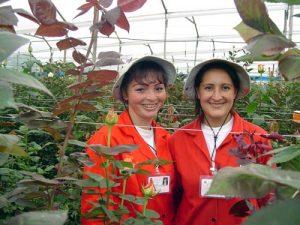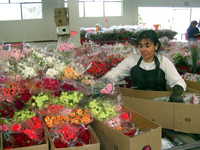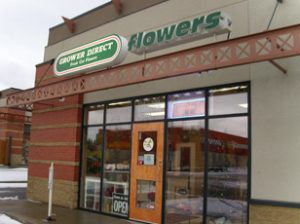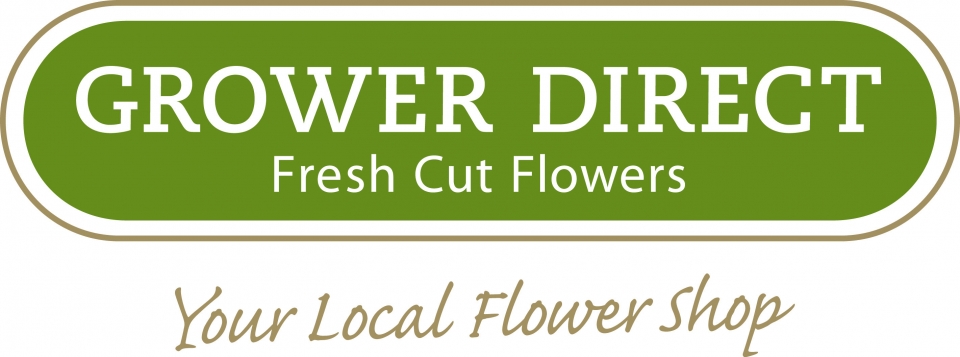![]() Prices in Canadian Dollars.
Prices in Canadian Dollars.![]() Prefer to call and speak to a floral agent? 1-877-277-4787
Prefer to call and speak to a floral agent? 1-877-277-4787
A Cut Flowers Journey
A flower’s journey to you can span continents and oceans, covering literally tens of thousands of miles – all in a matter of days. Flowers for the commercial market are grown in many parts of the world; from Canada to Australia, from Holland to Costa Rica or Kenya. Most of the flowers that we at Grower Direct purchase originate in the highlands of Colombia and Ecuador in South America. One of the world’s premiere flower growing zones is found in the Bogota Plateau of Colombia. Situated in the Andes mountains at 9,000 feet or higher, the plateau is blessed with rich volcanic soil and near-ideal climate for growing flowers.

Grower Direct has long standing relationships with some of this region’s best farms; some of them small family operations, others are large corporate farms. Grower Direct looks for suppliers with the right attitudes, systems and track records to ensure rigorous quality standards during growth, harvest, grading and packaging. As well as part of our longstanding commitment to making the world a better place for all of us we have chosen to deal with farms that have the FlorVerde certification. This ensures that our flowers are grown on farms where workers get a fair wage, medical support and good working conditions. In addition, through this program certified farms must adhere to environmental standards.
Rose Production
Although Grower Direct purchases a variety of products from our growers, the “mainstay” and foundation in our business is roses. The journey of a Grower Direct rose begins at one of our selected flower farms, where for months, rose plants have been nurtured under carefully monitored and controlled climatic and soil conditions. These plants take 6 to 8 months to flower and will produce flowers for approximately nine years. New rose plants are planted in beds of soil which have been sterilized, freshly turned and fertilized. As the plants grow and the flowers develop, they are closely monitored by highly trained staff. Roses are a unique plant because they are somewhat “manageable” – a grower can control their production yield to a certain extent. This manageability allows rose farms to deal with the huge fluctuations in demand for these flowers throughout the year – i.e. Valentine’s Day. The process of removing rose buds at an early stage to channel a rose’s energy into developing increased quantities of flowers ready to be harvested within a specified time frame is called the pinch (pinching off the buds) and requires a trained and experienced individual to get it “just right”. This results in less production during the “pinch” but provides the potential of scheduling the most production at a specific time in the future. However, it is not an exact science and many factors (amount of light, temperature, soil conditions, variety of rose, etc.) will impact the actual result.
Roses are a unique plant because they are somewhat “manageable” – a grower can control their production yield to a certain extent. This manageability allows rose farms to deal with the huge fluctuations in demand for these flowers throughout the year – i.e. Valentine’s Day. The process of removing rose buds at an early stage to channel a rose’s energy into developing increased quantities of flowers ready to be harvested within a specified time frame is called the pinch (pinching off the buds) and requires a trained and experienced individual to get it “just right”. This results in less production during the “pinch” but provides the potential of scheduling the most production at a specific time in the future. However, it is not an exact science and many factors (amount of light, temperature, soil conditions, variety of rose, etc.) will impact the actual result.
The Harvesting Process
Here is how the actual harvesting process takes place for a rose:
- When the roses have reached the state of maturity, they are hand-cut by workers who look for proper stem length and bud aperture (opening), and then select them one by one.
- Immediately after being cut, roses are immersed in a citric acid solution. This solution is absorbed into the stems to clean them, help prevent bacteria blockage and keep flowers hydrated until they receive additional post-harvest care further down the line
- While they are dripping wet, flowers are placed into boxes and transported to the nearby post-harvest care facility. Within 15 minutes after flowers are cut, workers begin the post-harvest process according to Grower Direct’s own specifications:
- Guard petals are carefully removed to prepare the flowers for retail presentation and sale. In order to maintain the proper tension within a rose and thus maximize its potential to open completely, it is very important that minimal petals are removed. This process is taken extremely seriously at the farm level.
- Foliage and thorns are removed (or “cleaned”) from the bottom third of the stem. Roses are graded by type, colour, length and proportionate head size, and labeled with coloured stickers to identify their different characteristics. These stickers not only specify length, but also identify the worker who graded the product.
- Flowers are bundled in sets of twenty-five in plastic sheets, then trimmed and secured with an elastic around the bottom of the stems.
- Bundled roses are hydrated for 6-24 hours in water which contains formulations to help kill developing bacteria. This ensures they are prepared for the journey ahead.
 Roses are placed into cold rooms where their temperature is lowered to just above freezing, this is the start of what is referred to as the “Cold Chain”. This pre-cooling process helps preserve the product during its journey to our stores. At this temperature, roses are almost dormant. This is instrumental in maximizing the time that Grower Direct customers will enjoy their flowers at home and is something we work hard to maintain throughout the journey.
Roses are placed into cold rooms where their temperature is lowered to just above freezing, this is the start of what is referred to as the “Cold Chain”. This pre-cooling process helps preserve the product during its journey to our stores. At this temperature, roses are almost dormant. This is instrumental in maximizing the time that Grower Direct customers will enjoy their flowers at home and is something we work hard to maintain throughout the journey.- Pre-cooled roses are packed in boxes for shipping while still in the cold rooms. This helps to maintain temperatures near the optimum shipping temperature for roses of 1 C (34F). Boxes are coded so that distributors and retailers will know exactly what they are receiving.
- Boxes are loaded onto refrigerated trucks, then transported swiftly to cold rooms at the International Airport. From here they are loaded onto dedicated flower air cargo planes and flown to Miami.
Flight To Miami
Cargo planes carrying flowers are loaded in the evening instead ofduring the day. At a high altitude airport like Bogota, carriers prefer to operate at night so that their heavily laden aircraft can get better lift for takeoff. This is beneficial for the flower business; loading occurs in the cooler evening hours and unloading in Miami happens in the relatively cool hours of the early morning.
Miami International Airport
Flowers make up about forty percent of the cargo handled at Miami International Airport, in fact the airport handles over 85% of flower imports into the United States (about 32,000 boxes a day!). So it is not surprising that the cargo handling facilities there are optimized to give flower importers the service they want. Flowers from Columbia and Ecuador and elsewhere are taken directly from the planes to the airport’s huge cooler rooms. These receiving terminals are kept at a constant 34 °F (1 °C), and can hold as many as 14,200 full boxes of flowers at one time.
Inside the cooler, all cargo passes through highly advanced x-ray machines before it actually clears customs. Anything out of the ordinary that is detected by the machine is isolated in a locked cage and opened for inspection by United States Customs.
The x-ray process takes no time at all – as a matter of fact, 120 flower boxes (which equal one airplane pallet) will pass through the x-ray in just 5 minutes. Security systems like these are used to search for contraband hidden in cargo shipments. Advances in security technology mean there is no longer any need to open each box and inspect flowers by hand as was done in the “old days”.
In the U.S. Customs’ product quality area, boxes may be randomly inspected for insects, fungi and soil conditions that are prohibited from entering the United States. At least one box of each flower type from every waybill arriving in Miami is opened for detailed, hands-on inspection by the US Department of Agriculture.
Once the boxes have been officially cleared for entry, product destined for the open market is distributed to local import or brokerage houses which sell flowers to wholesalers throughout North America.
Flowers brought in under Grower Direct’s standing order arrangements with South American flower farms travel a different path.
Our Quality Control and Distribution Facility
Grower Direct’s shipments from Columbia and elsewhere are taken directly to our own Miami facility. Here, under strict temperature control, orders from each individual Grower Direct store can be assembled by our Miami staff, using both Standing Order product and flowers purchased from the Miami open market. Grower Direct’s cold room is capable of handling 2800 boxes of flowers at a time. It is equipped to monitor and regulate three of the primary factors which influence a flower’s cut-life: temperature, humidity and the production of ethylene gas.
On receiving a shipment, our quality control inspector records the temperature inside each box of flowers. Samples of the product from each farm are selected for inspection to ensure compliance with international standards and Grower Direct’s own specifications. Only after clearing this hurdle is the product officially accepted.
At that point, boxes are sorted according to type, originating farm and customer order and then grouped by destination Drop Point and labeled to ensure prompt and accurate delivery to the appropriate stores. If necessary, product is pre-cooled prior to shipping out of Miami so that the temperature in the box is as close to freezing as possible. Using loading procedures developed by Grower Direct, boxes for each Drop Point are then loaded onto trucks for shipping. Under our loading protocol standard trailers carry 1400 boxes (instead of their full capacity of 1600 boxes) to optimize air circulation between the boxes. All of the steps just described happen very rapidly. In fact, Grower Direct product is loaded onto our refrigerated trucks less than 60 hours after cut-time on the farm.
Transportation To Stores
In a business as sensitive to time and atmospherics (temperature and humidity) as cut flowers, transportation is the heart of the matter. That is why Grower Direct has devoted so much attention to this subject. We believe that, along with our relationship with suppliers, it is our transportation system which sets us apart from the competition; it is part of our competitive advantage.
We were one of the first Canadian flower importers to utilize refrigerated ground transport to its full potential by running our own dedicated trucks. In fact we are still the only Canadian flower retailer to do this, most of our competition relies on purchasing their flowers through a local wholesaler.
Transportation By Truck Carrier
In the face of stiff competition from air carriers in previous years,North American road haulers now offer expedited long-distance specialty services at competitive prices, tailored to the particular needs of their customers. As an example: there are now large companies that specialize in the transportation of fresh cut flowers.
Grower Direct uses only dedicated flower trucking lines to ship flowers from our Miami facility to their drop points. The 52-foot long trailers are refrigerated and equipped with air-ride suspension to prevent unnecessary movement and damage to the flowers in transit. The trucks are also equipped with ethylene gas scrubbers and temperature monitors to ensure that flowers arrive in the same condition that they left the warehouse.
Under contract to Grower Direct, trucks depart Miami weekly for different parts of Canada. Transit times vary between each geographic area but with a system of two drivers per truck the farthest drop point from Miami is less than 72 hours away.
At Grower Direct Stores
When the flowers arrive at your Grower Direct store, they are counted and checked for damage, then taken immediately to the in-store cooler (the last step in the Cold Chain). The next few hours are busy ones for the local staff. All the flowers must be removed from their boxes, and put through a variety (depending on species and sales presentation) of post harvest care procedures to maintain product quality and display the flowers for sale. When you purchase flowers from a Grower Direct store we always provide instructions and Grower Direct Fresh Flower Food for the proper care and handling of flowers within your home or business.
This completes our description of a flower’s journey from the farms in South America to Grower Direct stores in Canada. Flowers purchased under our standing orders with farms in Colombia and Ecuador reach our stores in as little as four days. For a rose with an average cut-life of 21 days, (with proper care and handling at every stage of its journey), there should be up to ten to 14 days of vase-life in the homes and workplaces of our customers.

